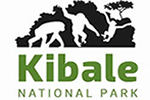UWA has good news for chimpanzee tracking enthusiasts. A second chimpanzee community is being habituated in Kibale National Park in western Uganda, and this will be used exclusively for tourism purposes. The community being habituated is called the Bulaiga Chimpanzee Community, and it will help address the problem of inadequate availability of chimp tracking permits, which has recently become one of the most popular tourist attractions in Uganda.
Currently, Kibale National Park has three habituated chimpanzee communities, two of which are used exclusively for research purposes and only one used for tourism. The communities used for research are the Ngogo and Kanyawara chimpanzee communities, and the tourism community is the Kanyantale chimpanzee community.
Kibale has a population of 1,200 chimpanzees living in 35 communities, and less than 20 percent of the total population have been habituated.
Chimpanzees live in communities comprised of between 30 to over 120 individuals. Unlike gorillas that live in a relatively small unit, chimpanzees live in a “fission-fusion” social system. In fission-fusion societies, different individuals of the same community meet up with each other to form temporary “parties” and then split up again, often several times in a day. Parties can consist of all-males, adults, mothers, all-females and sub adult individuals of different age and sex (Reynolds & Reynolds, 1965).
At the moment all tourists visiting Kanyanchu Visitor Centre (KNP) are tracking one chimpanzee community (Kanyantale). A maximum of 18 tourists in three groups can be allowed to view the chimps at any one time with each group staying with the chimps for a maximum of one hour. Because of the fission-fusion social behaviour, sometimes it is difficult to have all the 18 tourists even in three groups to view the same community. The situation is made worse when there are visitors undertaking the chimpanzee habituation experience where tourists pay to stay with chimps from morning till evening when the chimps go to sleep.
This has been a source of conflict between tourists undertaking the chimpanzee habituation experience and those doing the normal chimpanzee tracking as they all use the same chimpanzee community. To overcome this problem, a decision has been taken to habituate a second chimpanzee community (Bulaiga community) also near Kanyanchu such that when there are visitors undertaking chimpanzee habituation experience (that is gaining prominence these days as it is more rewarding), they should not be inconvenienced by the tourists doing normal tracking.
The Kanyantale chimpanzee community near Kanyanchu Visitor Centre has been habituated since 1991 and the chances of locating these chimps by tourists are very good (success rate over the last five years estimated at 95%). There has been a school of thought that the Kanyantale chimpanzee community has been over habituated. A recent research to study the impact of tourism and habituation on the behaviour of the Kanyanchu (Kanayantale) chimpanzee community has just completed the data collection phase and when finalised results will provide management with scientific information to better manage the chimpanzees and the tourism development.
The Bulaiga chimpanzee community comprises of over 120 individual chimpanzees and quite often they interact with the Kanyantale community creating a scene that is worth seeing by any adventurous tourist. The community is also near the Kanyanchu Visitor Center but its home range is concentrated to the west of the Fort Portal – Kamwenge Road. Visitors to Kanyanchu would therefore have easy access to the Bulaiga chimpanzee community once it is fully habituated.
Habituation involves following the chimps for several days, months and years to get them used to presence of people in their vicinity. It is anticipated that within a period of three years from July 2008, the community shall be fully habituated for tourism though mock tourism and habituation experience is expected to start much earlier depending on analysis of information collected during initial stages of habituation. During habituation data on phenology, and behaviour shall be collected to provide a scientific basis for the management of the tourism once it starts.
As part of the habituation process, a trail network for the new Bulaiga chimpanzee community is being mapped and will be prepared and cleared to ease tracking and habituation by June 2009. It is therefore expected that with a second chimpanzee community in KNP habituated for tourism, the current pressure on the Kanyantale community shall be eased and many more tourists who would have otherwise missed the opportunity to track chimps due to unavailability of permits will have the opportunity to enjoy seeing chimps in their natural habitat in KNP.

